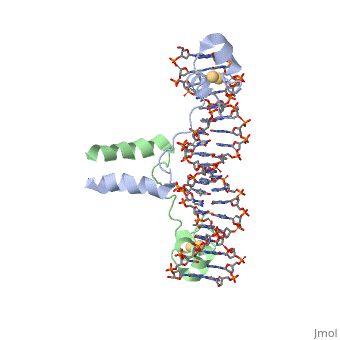Sandbox reserved 1754
From Proteopedia
(Difference between revisions)
| Line 34: | Line 34: | ||
<Structure load='3cmx' size='350' frame='true' align='right' caption='Insert caption here' scene='Insert optional scene name here' /> | <Structure load='3cmx' size='350' frame='true' align='right' caption='Insert caption here' scene='Insert optional scene name here' /> | ||
| - | RecA is one of the many proteins that is involved in recombination cross over events and during recombination repair in response to single strand DNA breaks. RecA is a rather small monomer protein that can multiplex with itself up to thousands of RecA proteins in order to associate with either dsDNA or ssDNA. The structure of RecA was determined through x-ray crystallography and each monomer contains very distinct structural components. These components are a largely helical 30-residue N-terminal region, a 240-residue α/ß ATPase core, and a 64-residue C-terminal globular domain. | + | RecA is one of the many proteins that is involved in recombination cross over events and during recombination repair in response to single strand DNA breaks. RecA is a rather small monomer protein that can multiplex with itself up to thousands of RecA proteins in order to associate with either dsDNA or ssDNA. The structure of RecA was determined through x-ray crystallography and each monomer contains very distinct structural components. These components are a largely helical 30-residue N-terminal region, a 240-residue α/ß ATPase core, and a 64-residue C-terminal globular domain. The process of recombination carried out by RecA is an ATP dependent process. ATP plays a very critical role in recruiting multiple RecA monomers to one another so that a full chain filament may be formed. This occurs through the binding of ATP to two different α/ß ATPase cores on subsequent RecA monomers. "INSERT HERE HOW ATP IS COORDINATED". |
Revision as of 17:32, 3 October 2022
DNA RECOGNITION BY GAL4: STRUCTURE OF A PROTEIN/DNA COMPLEX
| |||||||||||


